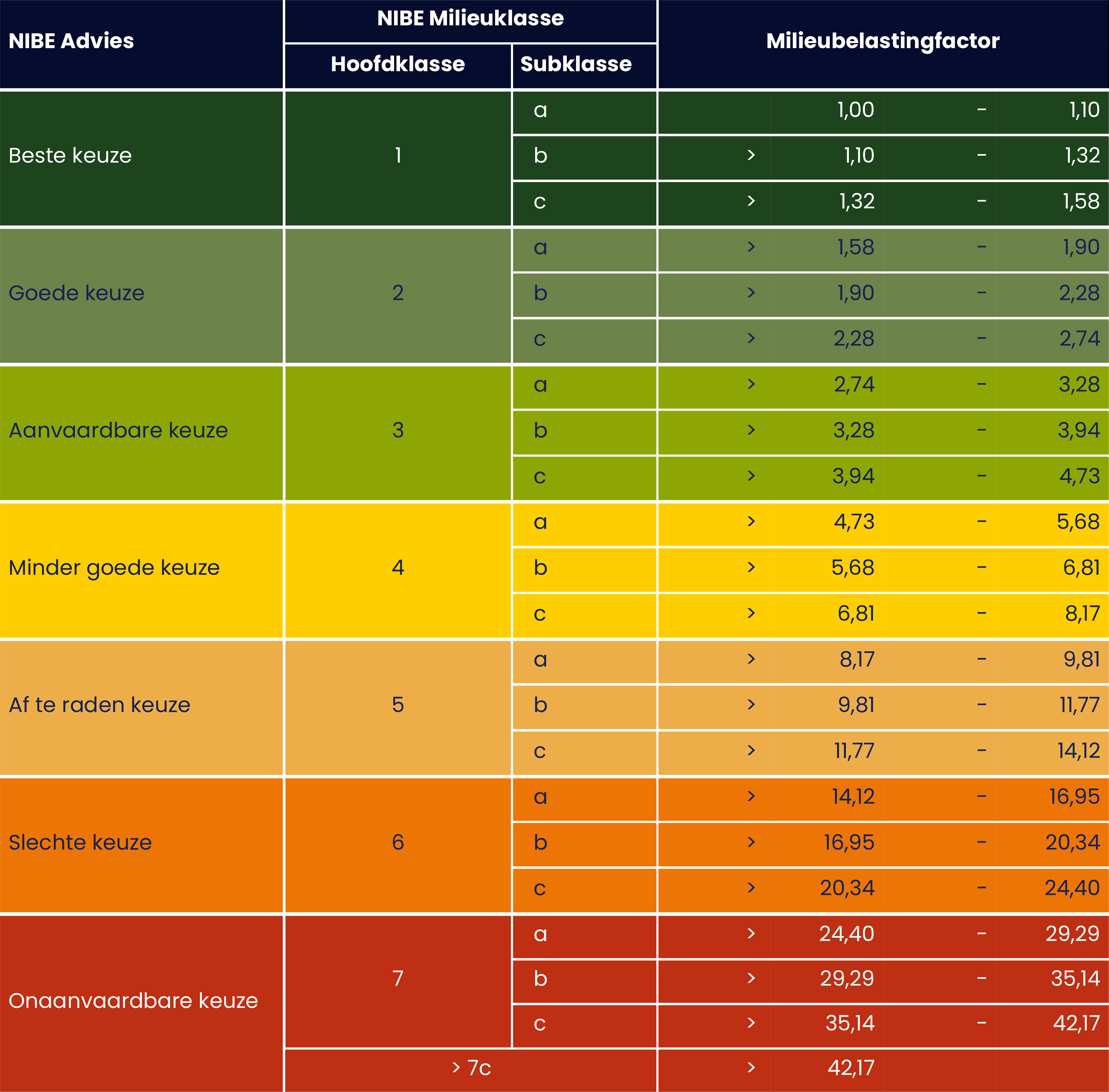NIBE Environmental Classifications, how to choose the most environmentally friendly building product
Are you looking for an environmentally friendly building product?
NIBE has calculated the environmental impact of some 1,000 building products. The results are conveniently published in the NIBE Environmental Classifications. This way you can easily make a conscious sustainable choice.
See and compare the environmental impact of different building products or building systems at a glance. Make informed sustainable product choices with the NIBE Environmental Classifications.
Choose sustainable materials
The NIBE Environmental Classifications compares the environmental impact of building products based on the same starting points, within the same application. Only then do you get a fair comparison.
Choose the most environmentally friendly solutions at a glance. Independent, transparent and unique.
The NIBE Environmental Classifications was created on the basis of many years of LCA experience and includes some 1,000 building products. Clearly divided into more than 25 categories, based on the NL/SfB, the standard classification of building components and installations.
How does it work?
To determine the environmental impact of a construction product, a life cycle assessment (LCA) is performed for each product according to the latest version of the Assessment Method for Environmental Performance of Construction Works. The environmental impact (i.e. shadow costs*) of a product is calculated over all product life phases (from extraction to waste processing). The lower the shadow costs, the more sustainable a product is.
The NIBE Environmental Classifications distinguishes seven Environmental Classes to compare the environmental impact of building products. Each Environmental Class has a first (a), second (b) and third (c) preference.
The environmentally best scoring product within the same application, the so-called NIBE Environmental Reference, always receives Environmental Class 1a.
This Environmental Reference is the most sustainable product, with the lowest environmental impact and is the benchmark.
The Environmental Class of a building product is determined by testing a product against the Environmental Reference. The deviation in shadow costs compared to the Environmental Reference (the NIBE Environmental Impact Factor) results in the Environmental Class.
|
An example |
: € 10 : € 25 : 2.5 (€ 25/€ 10) : 2c |
Product X is assigned Environmental Class 2c because product X puts 2.5 times (€ 25/€ 10) more pressure on the environment than the best scoring product.
Only building products with Environmental Class 1 or 2 are rated as sustainable product choices by NIBE.
* Shadow costs (or prevention costs) are the costs you would have to incur to compensate for the negative environmental impacts of (the production of) a product.

Table 1 - NIBE Environmental Classes
The NIBE Environmental Classifications can be consulted free of charge by everyone at www.nibe.info.
Want to know more about our NIBE Environmental Classifications? Then contact us at milieuclassificaties@nibe-sustainability-experts.com